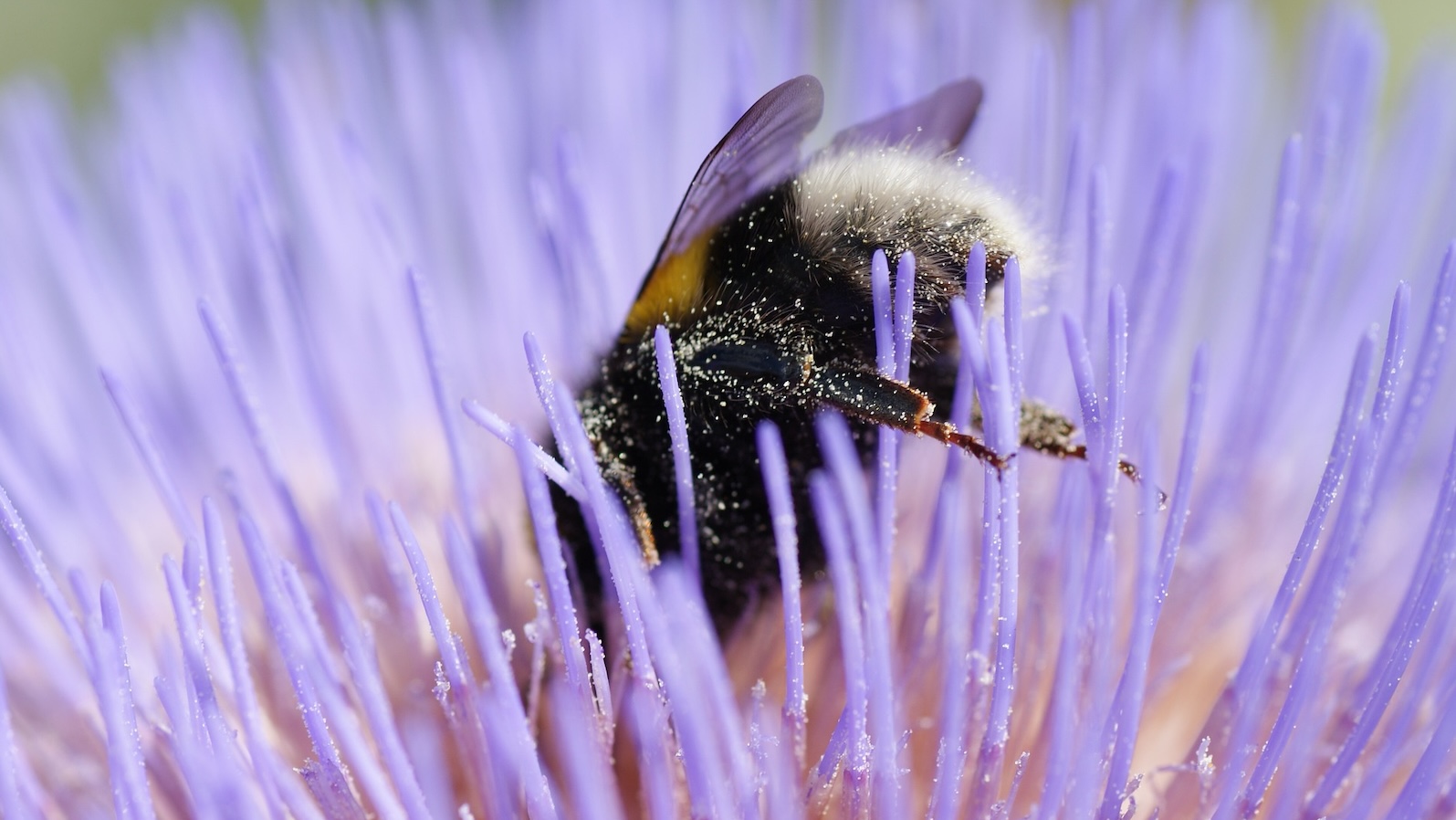
Tell the EPA to ban the worst uses of bee-killing neonics
An EPA report found that commonly used pesticides are threatening 80% of the country’s endangered species.
Add Your Name
You’re familiar with pesticides and how they deter insects from destroying crops. But did you know that pesticides are harming wildlife, and threatening endangered species?
A class of pesticides called neonicotinoids are used every day in agriculture to protect crops, but research from the Environmental Protection Agency (EPA) shows these chemicals are turning out to be more dangerous than previously thought.
In fact, a single kernel of corn coated with a neonicotinoid is enough to kill a sparrow or bluejay.
Neonicotinoids, commonly referred to as neonics, were specifically designed to mimic nicotine. It’s even where these pesticides get their name.
These synthetic chemicals are applied to the seeds of various crops, including corn, wheat, soy and cotton. Because these pesticides are water soluble, they get into every part of the plant, including its pollen, flowers and fruit. When eaten, neonics affect the central nervous system of insects, leading to paralysis, then death.
Neonics are toxic to all invertebrates, including essential pollinators, like bees.
According to a National Geographic study, neonics are 7,000 times more toxic to bees than DDT, a once-popular pesticide that has been banned since 1972.
Imagine not knowing the breakfast you just ate was contaminated with nicotine — the same goes for your lunch and dinner. This is what’s happening to animals, and it’s no surprise they’re getting sick.
In addition to bees, hundreds of studies show these pesticides have a direct correlation on the population-decline of plenty of living creatures, including birds, butterflies, freshwater invertebrates and mammals.
According to a review by the EPA, three common neonics were harmful to three-quarters of all endangered plants and animals. Imidacloprid, a popular neonic, is currently used in the U.S. for treatment of fruit, vegetables and cotton.
Imidacloprid has been shown to have an adverse effect on 1,445 living species, including 80% of all endangered plants and animals, as well as the habitats of 658 endangered animals. Affected animals include the greater prairie chicken, cave shrimp, whooping cranes and the Plymouth redbelly turtle.
When neonics are ingested by birds, these nicotine-like substances wreak havoc on their bodies, causing issues with metabolism, reproduction, and migration.
A report studying the effects of neonics on deer showed imidacloprid was “likely causing lower metabolism and lethargy in affected animals,” and that higher levels of the chemical were correlated with decreased size in the spleen, genitals and liver.
Imidacloprid, as well as two other popular neonics, clothianidin and thiamethoxam, were all shown to have similar effects on the environment.
The pesticide, which is sprayed on crops or used to coat plant seedlings, is then absorbed by the growing plant. The chemicals kill the insects that feed on the plant.
From there, pesticides can end up in our waterways when runoff carries neonics further into the environment. These neonics are also unknowingly eaten by animals that ingest chemically-treated crops — or by birds that scoop up a few stray seeds during planting. While we don’t know how neonics affect all animals, research shows they can be particularly harmful to birds.
Dr. Christy Morrissey, an avian and aquatic ecotoxicologist at the University of Saskatchewan, said that neonics can persist in soil for years. “They’re readily moving into the water because they’re water-soluble, and then they impact the whole food chain,” Morrissey said.
If pesticides can disrupt the entire food chain, that spells danger for humans, too.
Though neonics are banned in the European Union, these pesticides have been used in the U.S. since 1994 and are one of the most popular forms of insecticides today.
This is despite the fact that neonics provide “little or no overall benefits to soybean production,” according to the EPA. Similar findings were reported for the country’s corn supply, even though nearly all U.S. corn seedlings are treated with neonics.
In 2016, France banned the use of neonics, and the European Union followed in 2018, citing significant harm to bees — and yet, neonics are still the most popular insecticide used in the U.S. The bright side is, there are ways to stop the problem from getting worse. The EPA itself has said neonics are harmful to the environment. Not only is the government entity required to review how these pesticides affect the environment, it has the authority to regulate how these pesticides are used.
Given that other countries in Europe have already banned neonics and that ten states have restricted neonics in some manner, the rest of the U.S. needs to follow suit and take action. It’s time to make the world safer for every living creature. We can start by phasing out these harmful pesticides.
Neonics are harming the environment and killing off endangered species. Tell the EPA to ban the worst uses of these wildlife-threatening pesticides now.
To save the bees, we need to stop the widespread use of bee-killing pesticides.
Add Your Name
Steve directs Environment America’s efforts to protect our public lands and waters and the species that depend on them. He led our successful campaign to win full and permanent funding for our nation’s best conservation and recreation program, the Land and Water Conservation Fund. He previously oversaw U.S. PIRG’s public health campaigns. Steve lives in Sacramento, California, with his family, where he enjoys biking and exploring Northern California.
